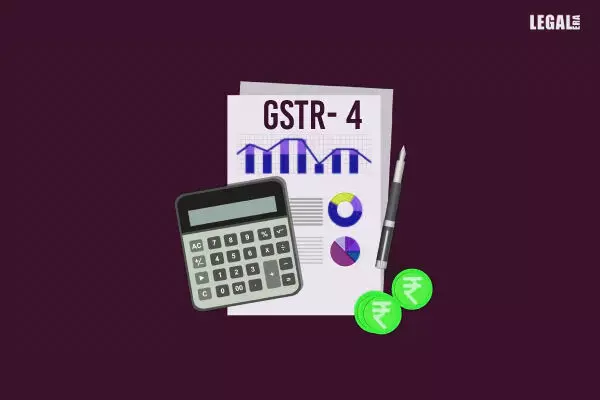- Home
- News
- Articles+
- Aerospace
- AI
- Agriculture
- Alternate Dispute Resolution
- Arbitration & Mediation
- Banking and Finance
- Bankruptcy
- Book Review
- Bribery & Corruption
- Commercial Litigation
- Competition Law
- Conference Reports
- Consumer Products
- Contract
- Corporate Governance
- Corporate Law
- Covid-19
- Cryptocurrency
- Cybersecurity
- Data Protection
- Defence
- Digital Economy
- E-commerce
- Employment Law
- Energy and Natural Resources
- Entertainment and Sports Law
- Environmental Law
- ESG
- FDI
- Food and Beverage
- Gaming
- Health Care
- IBC Diaries
- In Focus
- Inclusion & Diversity
- Insurance Law
- Intellectual Property
- International Law
- IP & Tech Era
- Know the Law
- Labour Laws
- Law & Policy and Regulation
- Litigation
- Litigation Funding
- Manufacturing
- Mergers & Acquisitions
- NFTs
- Privacy
- Private Equity
- Project Finance
- Real Estate
- Risk and Compliance
- Student Corner
- Take On Board
- Tax
- Technology Media and Telecom
- Tributes
- Viewpoint
- Zoom In
- Law Firms
- In-House
- Rankings
- E-Magazine
- Legal Era TV
- Events
- News
- Articles
- Aerospace
- AI
- Agriculture
- Alternate Dispute Resolution
- Arbitration & Mediation
- Banking and Finance
- Bankruptcy
- Book Review
- Bribery & Corruption
- Commercial Litigation
- Competition Law
- Conference Reports
- Consumer Products
- Contract
- Corporate Governance
- Corporate Law
- Covid-19
- Cryptocurrency
- Cybersecurity
- Data Protection
- Defence
- Digital Economy
- E-commerce
- Employment Law
- Energy and Natural Resources
- Entertainment and Sports Law
- Environmental Law
- ESG
- FDI
- Food and Beverage
- Gaming
- Health Care
- IBC Diaries
- In Focus
- Inclusion & Diversity
- Insurance Law
- Intellectual Property
- International Law
- IP & Tech Era
- Know the Law
- Labour Laws
- Law & Policy and Regulation
- Litigation
- Litigation Funding
- Manufacturing
- Mergers & Acquisitions
- NFTs
- Privacy
- Private Equity
- Project Finance
- Real Estate
- Risk and Compliance
- Student Corner
- Take On Board
- Tax
- Technology Media and Telecom
- Tributes
- Viewpoint
- Zoom In
- Law Firms
- In-House
- Rankings
- E-Magazine
- Legal Era TV
- Events
GSTN advisory to composition taxpayers
It has communicated the details of the debit to taxpayers through emails available on the portal
The Goods and Services Tax Network (GSTN) has issued an advisory to the composition taxpayers under the Goods and Services Tax (GST) regime.
Since Financial Year 2019-20, composition taxpayers have paid the liability through Form GST CMP-08 on a quarterly basis, whereas after the end of a financial year, the return in Form GSTR-4 has to be filed annually.
As per the new advisory, the liability of the complete year is now to be declared in GSTR-4 under the applicable tax rates. From now on, the taxpayers have to fill up Table 6 of GSTR-4 mandatorily. In case, there is no liability, the table may be filled up with a '0' value. If no liability is declared in table 6, it will be presumed that no liability was required to be paid, even though, the taxpayer may have paid the liability through Form GST CMP-08.
In such cases, the liability paid through GST CMP-08 becomes excess tax paid and moves to the Negative Liability Statement for the utilization of the subsequent tax period's liability.
According to the advisory, for the convenience of the taxpayers, the liability paid through Form GST CMP-08 will be auto-populated in Table 5 of the GSTR-4. Taxpayers who do not fill up table 6 of GSTR-4, mean that no liability is declared, even though, the taxpayer may have paid the liability through Form GST CMP-08. 'The 'tax payable' in GSTR-4 is computed after reducing the liability declared in GST CMP-08, which is auto-populated in table 5. Thus, if nothing is declared in table 6, then the negative liability entry appears in GSTR-4.
The advisory read, "In the past, a lot of tickets were received by the Helpdesk for reducing the negative liability from the NLS and the same was being done. For the convenience of the taxpayers, the amount available in the negative liability statement was debited in the case of all taxpayers. It has been noticed that some taxpayers had utilized the amount available in negative liability statement for paying the liability to file a statement in Form GST CMP-08 or GSTR-4 of the subsequent financial year."
It further stated, "In such cases, the amount utilized out of the negative liability statement has been debited in the cash ledger. Though such liability should be paid by depositing the amount through a challan, in some cases it was not deposited by the taxpayers. For those who deposited the amount in the cash ledger, the debited amount was adjusted, whereas in case the amount of liability was not deposited, the balance in the cash ledger became negative. In such cases, the taxpayers are advised to urgently deposit the past liability through a challan of an equal amount.



